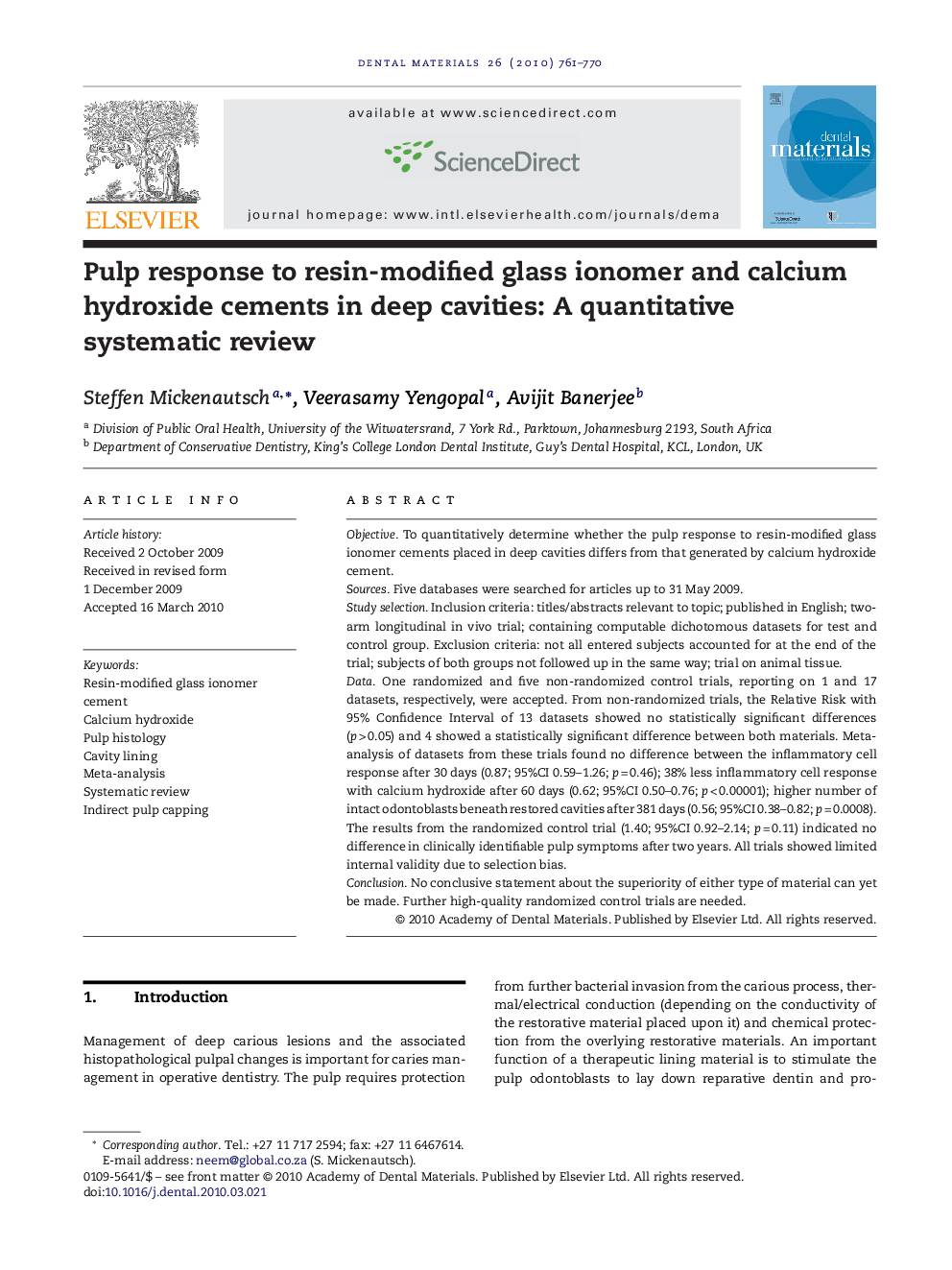| Article ID | Journal | Published Year | Pages | File Type |
|---|---|---|---|---|
| 1421531 | Dental Materials | 2010 | 10 Pages |
ObjectiveTo quantitatively determine whether the pulp response to resin-modified glass ionomer cements placed in deep cavities differs from that generated by calcium hydroxide cement.SourcesFive databases were searched for articles up to 31 May 2009.Study selectionInclusion criteria: titles/abstracts relevant to topic; published in English; two-arm longitudinal in vivo trial; containing computable dichotomous datasets for test and control group. Exclusion criteria: not all entered subjects accounted for at the end of the trial; subjects of both groups not followed up in the same way; trial on animal tissue.DataOne randomized and five non-randomized control trials, reporting on 1 and 17 datasets, respectively, were accepted. From non-randomized trials, the Relative Risk with 95% Confidence Interval of 13 datasets showed no statistically significant differences (p > 0.05) and 4 showed a statistically significant difference between both materials. Meta-analysis of datasets from these trials found no difference between the inflammatory cell response after 30 days (0.87; 95%CI 0.59–1.26; p = 0.46); 38% less inflammatory cell response with calcium hydroxide after 60 days (0.62; 95%CI 0.50–0.76; p < 0.00001); higher number of intact odontoblasts beneath restored cavities after 381 days (0.56; 95%CI 0.38–0.82; p = 0.0008). The results from the randomized control trial (1.40; 95%CI 0.92–2.14; p = 0.11) indicated no difference in clinically identifiable pulp symptoms after two years. All trials showed limited internal validity due to selection bias.ConclusionNo conclusive statement about the superiority of either type of material can yet be made. Further high-quality randomized control trials are needed.
